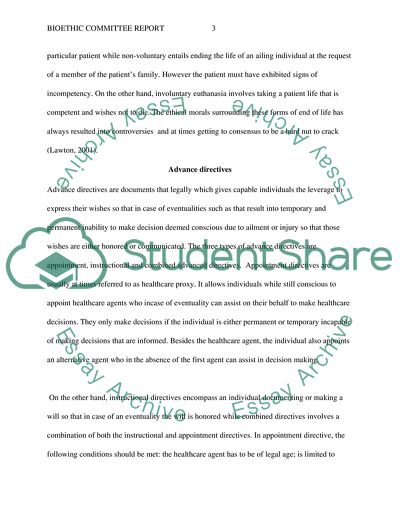Bioethics Committee Report Essay Example | Topics and Well Written Essays - 1000 words. https://studentshare.org/medical-science/1868527-ethical-issues-related-to-euthanasia
Bioethics Committee Report Essay Example | Topics and Well Written Essays - 1000 Words. https://studentshare.org/medical-science/1868527-ethical-issues-related-to-euthanasia.


